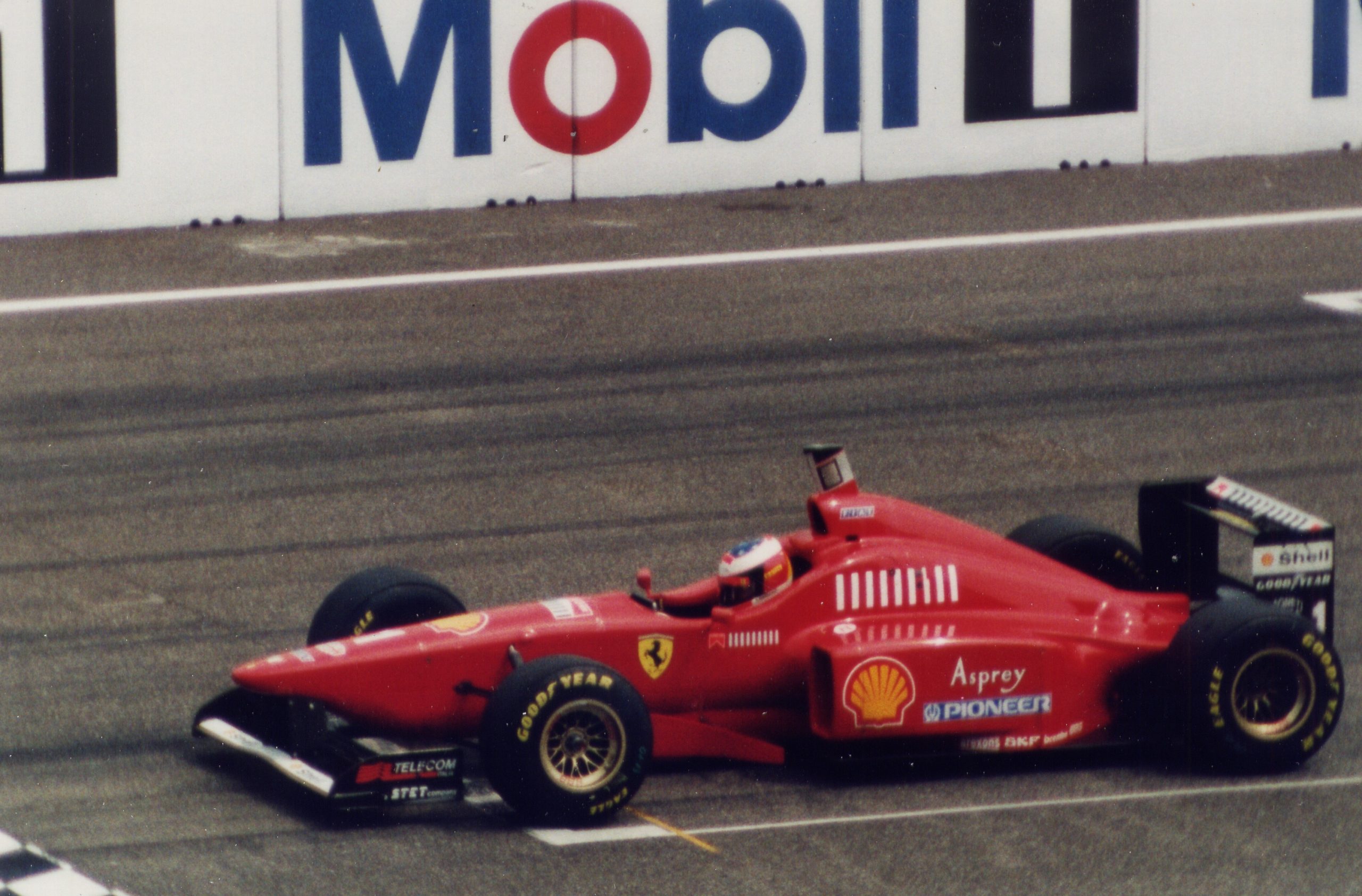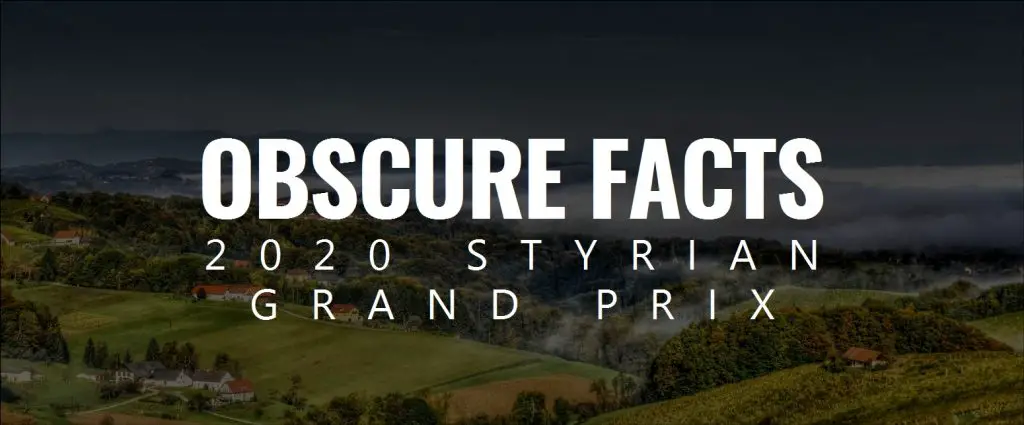It was a weekend of rarities for Formula 1, with Ferrari recording a double DNF, Hamilton taking pole by over a second and a fifth consecutive race being won from the front of the grid. We take a look at some the more obscure statistics from the 2020 Styrian Grand Prix weekend!
Ferrari’s First Lap Nightmare

Ferrari’s Styrian Grand Prix was over before it really got a chance to begin, as Charles Leclerc collided with Sebastian Vettel at Turn 3 on the opening lap. Both drivers retired as a result, marking the team’s second double DNF in the last four races. With Haas and Alfa Romeo also failing to score, this was the first race since the 2015 Mexican Grand Prix in which no Ferrari-powered cars scored a point.
Double retirements are a very rare occurrence for Ferrari in the modern era. Since the turn of the millennium, there have been only seven races in which the team have recorded a double retirement: the 2003 Brazilian Grand Prix, the 2006 Australian Grand Prix, the 2009 Australian Grand Prix, the 2017 Singapore Grand Prix, the 2019 Brazilian Grand Prix and the 2020 Styrian Grand Prix. However, from those seven, Kimi Raikkonen was classified in the 2009 Australian Grand Prix and both drivers were classified at Interlagos last year as they had completed more than 90% of the race distance.
The last time Ferrari recorded two double retirements in the space of four or less races was in 1996. At the 1996 Canadian Grand Prix, both Michael Schumacher and Eddie Irvine failed to finish. Then, at the next round in France, Schumacher failed to even start the race while Irvine retired with gearbox troubles. The following race at Silverstone saw both drivers retire once more and, while Schumacher finished fourth at the German Grand Prix, the Hungarian Grand Prix saw both drivers fail to finish for the fourth time in five races.
Hamilton’s Stellar Saturday
Lewis Hamilton was in a league of his own in the wet conditions of Q3 on Saturday as he took pole position by a staggering 1.216 seconds. It is only the seventh time this millennium that pole has been decided by over a second, after the 2000 German Grand Prix, the 2005 Australian Grand Prix, the 2010 Brazilian Grand Prix, the 2010 Malaysia Grand Prix, the 2014 British Grand Prix and the 2017 Italian Grand Prix. Of those, Giancarlo Fisichella’s pole margin at the 2005 Australian Grand Prix was the biggest. His 2.969 second advantage was the result of qualifying being decided by the aggregate time of two laps.
Statistically, Hamilton’s pole position at the 2020 Styrian Grand Prix was the equal-27th most dominant qualifying performance in Formula 1’s World Championship history. Max Verstappen set the second fastest lap time in the session, with a time that was 101.53% of Hamilton’s pole time – the same percentage by which Teo Fabi took pole at the 1985 German Grand Prix.
Overall, this was the 101st time in Formula 1 history that pole was decided by over a second. However, if you take out the 2005 Australian Grand Prix (where pole was decided by the aggregate of two lap times) and the Indianapolis 500 in each year between 1950 and 1955 (where pole was decided by the aggregate of four laps), Saturday marked the 94th time that pole has been decided by over a second on a single lap run.
Fifth Consecutive Race Won From Pole
Hamilton converted his sensational pole into his 85th career victory on Sunday, making the 2020 Styrian Grand Prix the fifth consecutive Formula 1 race to be won from pole position. The last time five consecutive races were won from pole was between the 2017 Austrian and Italian Grands Prix. This is only the fourth time since 2008 that five consecutive rounds have been won by the polesitter, the other times being between the 2008 & 2009 Chinese Grands Prix and at the last five races of the 2016 season.
Should the polesitter win at the 2020 Hungarian Grand Prix, this would be the first time since 2006 that six consecutive races have been won from pole position. Such streaks are rare in Formula 1: the six races between the 2006 Spanish and French Grands Prix marked only the sixth time in history that six or more consecutive races have been won from pole position.
Consecutive Fastest Laps for McLaren
At the 2020 Austrian Grand Prix, Lando Norris became the 133rd F1 driver to set the fastest lap of a Grand Prix. At the 2020 Styrian Grand Prix, Carlos Sainz became the 134th driver to do so. After fitting a fresh set of tyres near the end of the race, Sainz broke the Red Bull Ring’s Lap Record by 1.338 seconds.
The 2020 Austrian and Styrian Grands Prix mark the first time that McLaren have set the fastest lap in two consecutive races since the 2011 Singapore and Japanese Grands Prix. Perhaps surprisingly, those two races are also the last time that a team other than Mercedes, Ferrari or Red Bull set the fastest lap at two consecutive rounds of the championship.
Since the end of the 2011 season, there have been only four occasions where there have been two or more consecutive races in which teams other than Mercedes, Ferrari or Red Bull set the fastest lap. The last time it happened was at the 2014 Canadian and Austrian Grands Prix, where Felipe Massa set the fastest lap for Williams in Montreal and Sergio Perez set the fastest lap for Force India at the Red Bull Ring.
Russell Reaches Q2
On his 23rd attempt, George Russell finally reached Q2 for Williams and qualified in a very respectable twelfth. You may think that Russell has had the longest wait to reach Q2 in F1 history, but that’s not quite true.
Since the knockout qualifying system was introduced in 2006, only one driver has had a longer wait before progressing past Q1 for the first time. That driver is Adrian Sutil, who finally made it out of Q1 on his 41st appearance. All of those appearances were with the Silverstone-based team, who Sutil raced with under their Spyker and Force India guises. Sutil qualified fifteenth in Q2 at the 2009 Monaco Grand Prix, but like Russell would go on to be the penultimate classified driver in the following afternoon’s race.
Spare a thought too for the fifteen drivers who never made it out of Q1 on any of their Formula 1 appearances. Of that list, only Charles Pic and Narain Karthikeyan made more appearances than Russell did before his first Q2 appearance. Pic qualified 39 times without ever reaching Q2, while Karthikeyan never made it past the first stage of qualifying on 29 appearances. In the case of Karthikeyan, however, it is worth noting that he made nineteen further appearances before the knockout system was introduced, and recorded a best qualifying position of eleventh at the 2005 Japanese Grand Prix.
Two Canadians finish for the first time
With Lance Stroll finishing seventh for Racing Point and Nicholas Latifi completing the race in seventeenth place, the 2020 Styrian Grand Prix was the first ever World Championship Formula 1 race in which two Canadian drivers have reached the chequered flag.
Prior to this weekend, the 1967 Canadian Grand Prix, the 1969 Canadian Grand Prix and the 2020 Austrian Grand Prix were the only other races which multiple Canadian drivers had started.
At the 1967 Canadian Grand Prix, held at Mosport Park, there were two Canadian entries. While Eppie Wietzes was disqualified for attempting to receive outside assistance whilst suffering a mechanical issue, Al Pease was not classified having finished 43 laps behind the leader. Pease was one of three Canadians to appear on the grid at the 1969 Canadian Grand Prix, but he was disqualified from this event after 22 laps. The reason? He was driving too slowly. Fellow Canadians Bill Brack and John Cordts were more up to speed, but Brack finished ten laps down on the leaders and Cordts retired after ten laps.
Two different races, two different winners
The 2020 Austrian and Styrian Grands Prix marked the first time that Formula 1 has raced at the same track for two consecutive rounds of the championship, as well as the sixth time that there has been two consecutive Grands Prix in the same country.
The 2020 Austrian and Styrian Grands Prix are only the second pair of consecutive races held in the same country which have not been won by the same driver. The only other time it has happened was at the 1984 Detroit and Dallas Grands Prix, which were won by Nelson Piquet and Keke Rosberg respectively.
Read more facts and statistics from the 2020 Styrian Grand Prix weekend here.

